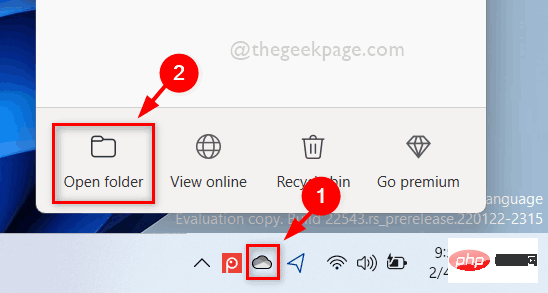I heard that there is going to be a discussion, so I invited a friend to write about it. I hope you can forgive me for my limited level:) Nowadays, many friends have their own free space (after all, there are still many poor people in China), and stingy ISPs do not provide MYSQL, so smart friends I chose ---- (FILE file table database format), which is actually my personal definition~ Access is a file table database. If you just add a DSN to your machine, you can access it through ODBC. Data within your ACCESS. However, it is impossible for ISP to configure DSN for you on the network~, so we chose to use files to save data FILE DATA. Taking into account the content: 1. Realize some functions of the database--(don't expect to be like the database~) 2. Data security and stability--(needs program support) 3. Convenience of maintenance--(TOO UP) If these contents are written at once, Here, it seems not very good~ Let’s start with the basics~ First you need a text to save, you can create it in the following ways 1. echo "info" >> File.txt 2. fopen("file.txt ","w/w+/a/a+"); 3. The first implementation of UPLOAD YOUR FILE.txt is exec() --- before using it, check whether this function is disabled in PHPINFO()~ The second one is basically the same Yes, I don’t think any ISP will disable this! Third, brother, upload your local files~ After creating the file, the following is the operation of the file. The operation of the file is simply-read/write, including update/deletion. 1. Here we first talk about the reading information of the file that needs to be read out after it is saved in the data file. If it is not read out, no matter how much you write, it will be useless. PHP provides several ways to read files 1, fopen 2, file 3 , The specific examples of fsockopen are excerpted 1. $fp=fopen("text.txt","method"); where METHOD is r - open the file in read-only mode; the read mark is in the first character of the file (equivalent to (equivalent to the file pointer in C). r+ - Open the file for reading/writing; the read flag is placed at the first character of the file (equivalent to the file pointer in C). w - Open the file for writing; place the write flag in the first place, while setting the file size to a minimum of -0 bytes. If the opened file does not exist, this file is created to provide for writing. w+ - opens the file for read/write; puts the write flag in first place, while placing the file The size is set to a minimum of -0 bytes. If the opened file does not exist, this file is created to provide writing a - Open the file in write-only mode; place the flag at the EOF of the file and all added information will be at the end of the file , if the file does not exist, create the file. a+ - Opens the file for reading/writing; puts the flag at the EOF of the file and all added information will be at the end of the file, creating the file if it does not exist. This function can also open http://, ftp://, udp:// files. http://, udp:// should be opened in read mode, otherwise an error will occur. Here is a small tip for this function: Please do not open the http:// file itself, otherwise there will be a little trouble ~ $testfile="test.txt"; $fp=fopen($testfile,r); $outputtext=fgets($testfile,filesize($testfile)); echo "$testfile文本内容:".$outputtext; fclose($fp) ?> 2. var $fp=array(); $fp=file("text.txt"); Let’s take a look at the meaning of this expression As the name suggests, file() reads all files and then stores them in an array. Each time a file appears in the file,
(carriage return and line feed), then there is one more element in the array. The file function has only one parameter, file(filename) $testfile="test.txt"; $fp=file($testfile); while($int_a=0;$int_a
"; } print "$testfile text content:
".$info; ?> 3.
"; } else { fputs ($fp, "GET / HTTP/1.0
Host: www.php.net
"); while (!feof($fp)) { echo fgets ($fp,128); } fclose ($fp); } ?>
"; } else { fwrite($fp,"
"); echo fread($fp, 26); fclose($fp); } ?> The reading of the file ends here for the time being, and the next step is to write the file....
 如何在Go中使用命名管道?May 11, 2023 pm 04:22 PM
如何在Go中使用命名管道?May 11, 2023 pm 04:22 PM命名管道是一种在操作系统中相对比较低级的进程通信方式,它是一种以文件为中介的进程通信方式。在Go语言中,通过os包提供了对命名管道的支持。在本文中,我们将介绍如何在Go中使用命名管道来实现进程间通信。一、命名管道的概念命名管道是一种特殊的文件,可以被多个进程同时访问。在Linux系统中,命名管道是一种特殊的文件类型,它们存在于文件系统的某个位置上,并且可以在
 如何在Go中使用第三方库?May 11, 2023 pm 03:30 PM
如何在Go中使用第三方库?May 11, 2023 pm 03:30 PM在Go语言中,使用第三方库是非常方便的。许多优秀的第三方库和框架可以帮助我们快速地开发应用程序,同时也减少了我们自己编写代码的工作量。但是如何正确地使用第三方库,确保其稳定性和可靠性,是我们必须了解的一个问题。本文将从以下几个方面介绍如何使用第三方库,并结合具体例子进行讲解。一、第三方库的获取Go语言中获取第三方库有以下两种方式:1.使用goget命令首先
 如何在PHP中使用协程?May 12, 2023 am 08:10 AM
如何在PHP中使用协程?May 12, 2023 am 08:10 AM随着传统的多线程模型在高并发场景下的性能瓶颈,协程成为了PHP编程领域的热门话题。协程是一种轻量级的线程,能够在单线程中实现多任务的并发执行。在PHP的语言生态中,协程得到了广泛的应用,比如Swoole、Workerman等框架就提供了对协程的支持。那么,如何在PHP中使用协程呢?本文将介绍一些基本的使用方法以及常见的注意事项,帮助读者了解协程的运作原理,以
 如何在 Windows 11 中按需使用 OneDrive 的文件Apr 14, 2023 pm 12:34 PM
如何在 Windows 11 中按需使用 OneDrive 的文件Apr 14, 2023 pm 12:34 PM<p>Windows 系统上的 OneDrive 应用程序允许您将文件存储在高达 5 GB 的云上。OneDrive 应用程序中还有另一个功能,它允许用户选择一个选项,是将文件保留在系统空间上还是在线提供,而不占用您的系统存储空间。此功能称为按需文件。在这篇文章中,我们进一步探索了此功能,并解释了有关如何在 Windows 11 电脑上的 OneDrive 中按需使用文件的各种选项。</p><h2>如何使用 On
 如何在Go中使用WebSocket?May 11, 2023 pm 04:17 PM
如何在Go中使用WebSocket?May 11, 2023 pm 04:17 PM近年来,WebSocket技术已经成为了Web开发中不可或缺的一部分。WebSocket是一种在单个TCP连接上进行全双工通信的协议,它使得客户端和服务器之间的通信更加流畅和高效。如今,很多现代的Web应用程序都使用了WebSocket技术,例如实时聊天、在线游戏以及实时数据可视化等。Go语言作为一个现代的编程语言,自然也提供了很好的支持WebSock
 如何在Go中使用音频处理?May 11, 2023 pm 04:37 PM
如何在Go中使用音频处理?May 11, 2023 pm 04:37 PM随着音频处理在各种应用场景中的普及,越来越多的程序员开始使用Go编写音频处理程序。Go语言作为一种现代化的编程语言,具有优秀的并发性和高效率的特点,使用它进行音频处理十分方便。本文将介绍如何在Go中使用音频处理技术,包括读取、写入、处理和分析音频数据等方面的内容。一、读取音频数据在Go中读取音频数据有多种方式。其中比较常用的是使用第三方库进行读取,比如go-
 如何在Go中使用嵌套结构?May 11, 2023 pm 04:39 PM
如何在Go中使用嵌套结构?May 11, 2023 pm 04:39 PM在Go语言中,嵌套结构是一种非常常见的技术。通过将一个结构体嵌入到另一个结构体中,我们可以将复杂的数据模型分解成更小的部分,使其易于理解和维护。本篇文章将介绍如何在Go中使用嵌套结构以及一些最佳实践。一、定义嵌套结构首先,我们需要定义一个包含嵌套结构的结构体。下面的代码演示了如何定义一个包含Person结构体的Company结构体:typePersons
 如何在Go中使用反转依赖?May 11, 2023 pm 03:39 PM
如何在Go中使用反转依赖?May 11, 2023 pm 03:39 PMGo语言中的反转依赖是一种非常实用的技术,它可以帮助开发者更好地进行软件开发。在本文中,我们将详细介绍什么是反转依赖,并且演示如何在Go语言中使用它来优化软件。一、什么是反转依赖在传统的软件开发中,模块之间存在着依赖关系。一些模块被其他模块所依赖,而另一些模块则依赖于其他模块。这种依赖关系在软件中非常普遍,但同时也会带来很多问题。一旦一个模块的代码发生了变化


Hot AI Tools

Undresser.AI Undress
AI-powered app for creating realistic nude photos

AI Clothes Remover
Online AI tool for removing clothes from photos.

Undress AI Tool
Undress images for free

Clothoff.io
AI clothes remover

AI Hentai Generator
Generate AI Hentai for free.

Hot Article

Hot Tools

mPDF
mPDF is a PHP library that can generate PDF files from UTF-8 encoded HTML. The original author, Ian Back, wrote mPDF to output PDF files "on the fly" from his website and handle different languages. It is slower than original scripts like HTML2FPDF and produces larger files when using Unicode fonts, but supports CSS styles etc. and has a lot of enhancements. Supports almost all languages, including RTL (Arabic and Hebrew) and CJK (Chinese, Japanese and Korean). Supports nested block-level elements (such as P, DIV),

MantisBT
Mantis is an easy-to-deploy web-based defect tracking tool designed to aid in product defect tracking. It requires PHP, MySQL and a web server. Check out our demo and hosting services.

SAP NetWeaver Server Adapter for Eclipse
Integrate Eclipse with SAP NetWeaver application server.

Atom editor mac version download
The most popular open source editor

MinGW - Minimalist GNU for Windows
This project is in the process of being migrated to osdn.net/projects/mingw, you can continue to follow us there. MinGW: A native Windows port of the GNU Compiler Collection (GCC), freely distributable import libraries and header files for building native Windows applications; includes extensions to the MSVC runtime to support C99 functionality. All MinGW software can run on 64-bit Windows platforms.






